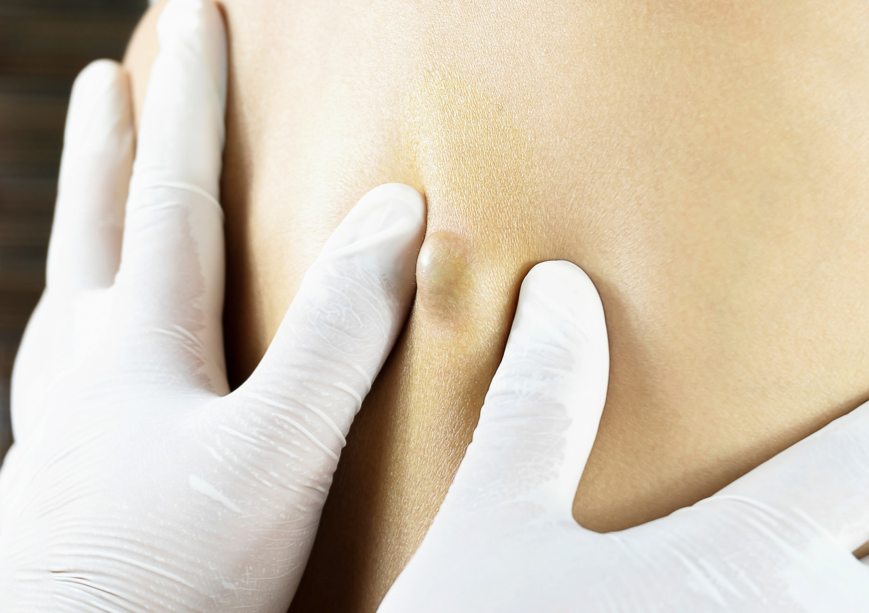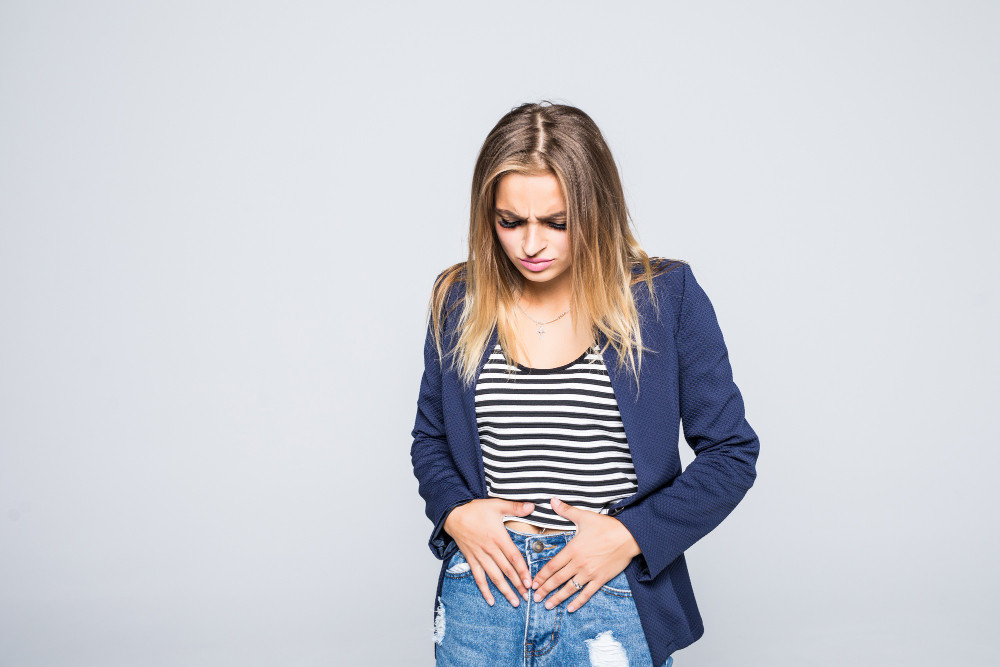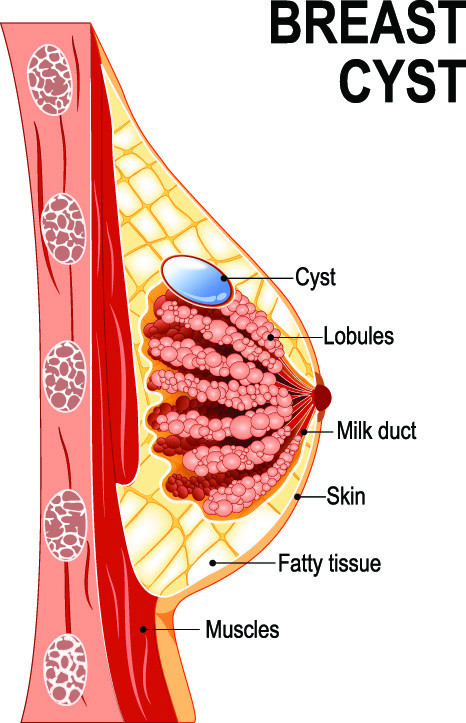Definition
Sebaceous cysts are lumps filled with fluid on the skin that originate from sebaceous glands. These lumps often appear on the face, neck, and trunk. Sebaceous cysts grow slowly and don’t cause pain, so people with sebaceous cysts generally do not seek medical attention. However, if you feel bothered by the presence of these cysts, you can consult a doctor to have them removed. Surgical removal of cysts may also be done if the cysts turn red, inflamed, or infected.
Sebaceous cysts are not malignant lumps, and these nodules are considered harmless. They may go away on their own without any treatment. However, the cyst could also be a symptom of more severe diseases, so you should consult a doctor to ensure that the lump is a sebaceous cyst, not malignant, and does not refer to other diseases.
The cysts are yellow or white-colored lumps that are mobile. There are many types of cysts on the skin, and sebaceous cysts originate from sebaceous glands. Sebaceous cysts can be found all over the body except the palms of the hands and soles of the feet. If the cysts are massaged or pressed with pressure, clear or yellowish fluid may be discharged from the lumps. Sebaceous cysts are not harmful, but some may turn malignant (cancerous).
Sebaceous cysts are different from epidermoid cysts because the latter do not originate from sebaceous glands. Sebaceous cysts are less common compared to epidermoid cysts.
Causes
Sebaceous glands are glands in the skin, generally located around hair follicles. They produce sebum or oil, which protects the skin from friction and increases moisture.
Cells of sebaceous glands last about a week and produce sebum, which is then broken down by the body. The functions of sebum are:
- Reducing water evaporation from the skin
- Contributing to body odor
- Protecting the skin from bacterial and fungal infections
- Contributing to skin defense together with Propionibacterium sp.
Sebaceous cysts form when the sebaceous glands or ducts are blocked by dirt, trauma, pimples, or scratching. They can also form due to damaged ducts in a genetic condition called basal cell nevus syndrome. Sebaceous cysts may go away on their own without any treatment, but in some cases, they stay forever.
There is no evidence of food or drink association with the appearance of sebaceous cysts to date. Experts think that food and drink do not affect the development of these cysts.
Risk factor
Risk factors that may increase the incidence of sebaceous cysts are:
- Men
- Skin trauma, such as frequent skin rubbing, scratching, and collision
- Frequent hair follicle inflamed or infection (folliculitis)
- High testosterone levels
- Family history of cyst (Gardner syndrome, Gorlin syndrome)
Symptoms
The main symptom of a sebaceous cyst is the appearance of a lump under the skin. The lump is painless and does not appear reddish (skin-colored).
But the cyst has the potential to become malignant if they are found to have the following characteristics:
- There are symptoms of infection, such as erythema and pus discharge
- The cysts grow larger and keep coming back after removal
- The size of the cyst is larger than 5 cm
- However, the symptoms above are not absolute and further examinations are required to determine whether the cyst is malignant or not
Diagnosis
The diagnosis of sebaceous cysts can be established by physicians from physical examinations and other diagnostic tests. Although sebaceous cysts appear yellowish compared to other cysts, a skin biopsy is still required. Tissue samples will be taken from the skin and assessed in the pathology laboratory. This procedure could also help determine whether the lump is a malignancy. Physicians will also need to differentiate between sebaceous cysts and abscesses (lumps filled with pus on the skin) and lipomas (lumps made of fatty tissue). Do not self-diagnose yourself from information on the internet.
Other diagnostic tests that could be done if the doctor suspects malignancy include:
- Ultrasound scan to view the contents of the cyst
- Punch biopsy, a procedure to take skin samples and view the samples under the microscope
- CT scan is rarely done but could be requested if the sebaceous cyst is very large or surgery is planned
Management
Small sebaceous cysts that do not pose any harm do not require special treatment. They are not dangerous. Cysts that turn red in color, become painful, or are warm to the touch require treatment with anti-inflammatory medical injections to reduce inflammation and swelling. The doctor may also drain the pus inside the cyst if infection is suspected.
Bothersome large cysts that potentially cause hair loss and affect the appearance could be removed. When the doctor removes the cyst, they administer a local anesthetic to numb the skin surrounding it. Then, a small incision will be made to drain the contents of the cyst before surgically removing the cyst. If the entire cyst is removed, the cyst is unlikely to reappear in the future.
Other methods that can be used to treat sebaceous cysts are:
- Laser excision
- Conventional wide excision involves making a small incision and draining the contents of the cyst, the method could leave a scar
- Minimal excision it’s performed by making a small cut on the skin over the cyst
- Punch excision
- Do not attempt to massage and drain the cyst's contents yourself, as this could spread the infection and cause the cyst to reappear.
Draining the cyst's contents may cause scarring and infection to other areas. Your doctor will give you a topical antibiotic that can be used after the procedure. You could reduce the swelling of the cyst with warm compresses at home.
Complications
Sebaceous cysts generally do not cause any complications. Infections may occur if the cyst is infected with bacteria, but you can prevent this by keeping your skin clean.
Prevention
The primary prevention of sebaceous cysts is not injuring the skin, which can cause damage to the glands. Avoid scratching the skin too hard, and if you have skin problems, you could consult a doctor or dermatologist. There are no specific medications that can prevent cysts. After the surgical procedure, cysts are less likely to reappear. To prevent infection of sebaceous cysts, you can keep the cyst clean by washing your skin with soap and let it dry. Avoid massaging or pressing the cyst to drain the fluid or pus inside by yourself, as this may increase the risk of spreading the infection.
When to see a doctor?
Small sebaceous cysts that do not pose any harm do not require any specific treatment. However, if you are concerned about the cysts, you can consult a doctor to determine whether the cyst is malignant or benign.
You should also see a doctor if:
- The sebaceous cyst is large and causes inconvenience
- The lump is not easily movable and seems to be 'stuck' in the underlying layer of skin (sebaceous cysts should be mobile, and immobility is one of the signs of malignancy)
- Infected sebaceous cyst (the lump seems to be red, with pus discharge, and cause pain)
- The size of the cyst is >5 cm
Looking for more information about other diseases? Click here!
- dr Anita Larasati Priyono
Cleveland clinic. (2021). Sebaceous cyst. Available from: https://my.clevelandclinic.org/health/diseases/14165-sebaceous-cysts
Cornforth T. (2022). When to worry about a sebaceous cyst. VeryWellHealth. Available from: Sebaceous Cysts: Symptoms, Causes, Diagnosis, and Treatment (verywellhealth.com)
National Health Service. (2020). Sebaceous cyst. Available from: https://www.nhs.uk/conditions/skin-cyst/
Sullivan D. (2020). What to know about sebaceous cysts. MedicalNewsToday. Available from: https://www.medicalnewstoday.com/articles/312361
Cobb C. (2021). Sebaceous cyst: causes, symptoms, treatments, and more. Healthline. Available from: https://www.healthline.com/health/sebaceous-cyst











